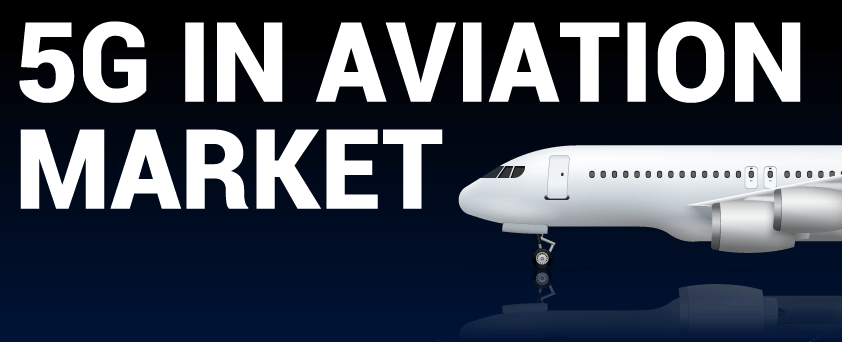Adding demand for global 5G in aviation business industry trends. connectivity in flying operations is anticipated to be one of the leading global 5G in aeronautics business assiduity trends. This is because 5G can be employed in a wide range of operations. For case, 5G technology can prove to be critical in drone operations as high- speed connectivity can give pivotal real- time data for any kind of military exertion.
The global 5G in aviation market size was USD 0.35 billion in 2020. The market is projected to grow from USD 0.54 billion in 2021 to USD 9.92 billion in 2028 at a CAGR of 47.03% in 2021-2028
5G technology refers to the fifth generation of mobile networks, which is the latest standard for wireless communication. It promises faster download and upload speeds, lower latency, and greater capacity compared to the previous generation (4G).
Here are some key aspects of 5G technology:
Speed and Latency: 5G technology promises to provide data speeds up to 10 Gbps, which is significantly faster than 4G. It also has lower latency, which means there is less delay between sending and receiving data. This is important for applications that require real-time communication, such as virtual reality, video conferencing, and gaming.
Capacity: 5G technology is expected to have greater capacity compared to 4G, which means it can support more devices and more data traffic. This is important for the growing number of connectd devices in the Internet of Things (IoT) and for streaming video content.
Network Architecture: 5G technology uses a different network architecture compared to 4G, which allows for greater flexibility and scalability. This includes the use of virtualization and cloud computing, which can help to reduce costs and improve network efficiency.
Use Cases: 5G technology has the potential to enable new applications and use cases that were not possible with 4G. This includes augmented reality, autonomous vehicles, remote surgery, and other applications that require high-speed, low-latency connectivity.
Preface of 5G in this assiduity is aimed at establishing a robust connectivity structure that would grease flawless communication between aircraft and their ground control systems. Also, high- speed internet on aeroplanes would enable people to conduct business conditioning whilst they’re flying, saving them precious time and energy. More importantly, 5G will be necessary in strengthening the integration of Internet of Effects technology in the aeronautics sphere, a feat that would be delicate to attain with 4G LTE. This would greatly compound the global 5G in aeronautics business assiduity growth till 2026.
5G technology in aeronautics is previsioned to be one of the central factors driving the growth of this assiduity. Aviation assiduity is expanding at snappy speed and 5G technology is slated to play a pivotal part in charting its development.
The exploration shares profound perceptivity into the colorful motorists, dynamics, and other factors that will shape the development of this assiduity during the cast period. Besides this, the exploration also provides an elaborative overview of the overall assiduity outlook that will also impact the assiduity. Incipiently, the exploration contained in the exploration will prop businesses to take important strategic opinions in a well- informed manner.
Likewise, global 5G in aeronautics business can elevate the safety and security quotient of aeroplanes as aviators will suitable to communicate fleetly with air control halls in times of torture. One of the most important benefits of aeronautics 5G is real- time aircraft health monitoring, which can be fulfilled through prophetic conservation tools and ways. These benefits are likely to accelerate the global 5G in aeronautics business assiduity profit in the near future.
North America to Lead the Pack; Asia-Pacific to Follow
With a profit generation of USD0.9 billion in 2019, North America is poised to dominate the global 5G in aeronautics business assiduity share during the cast period. The main forces propelling the assiduity in the region include rising demand for better in-flight experience, adding air trip, and a thriving aeronautics assiduity. Development of small indigenous airfields and growing investments by in-flight entertainment service providers similar as GoGo in 5G will also play a vital part in driving the assiduity in North America.
In Asia-Pacific, rapid-fire expansion of aeronautics structure and adding relinquishment of 5G technology in aeronautics, especially in China, will be the two crucial factors driving the growth in this region. China would be one of the early carriers for espousing 5G technologies at airfields. Also, Japan, Australia, and South Korea are doubling down their investment in developing 5G structure, which will augur well for the assiduity in Asia-Pacific.
Prudent Hookups to Stimulate Competition
The global 5G in aeronautics business assiduity cast paints a dynamic picture of the competition in this assiduity owing to adding strategic collaborations between challengers. Similar collaborations are aimed at consolidating the players’ hold on the assiduity through broadening of their service immolations.




